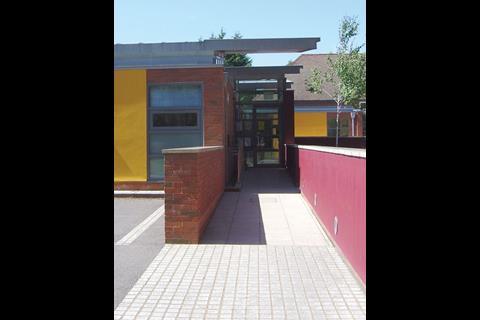Schools have to provide secure access systems, both to keep unwanted visitors out and to keep pupils in. Stephen Kennett looks at three ideas – from the simple to the really clever
Single-point access
The holy grail of a secure school is to have a single entrance, so the building can be locked down during the day, with the only entry or exit by way of a secure reception. Guidance published by Secured by Design, the crime prevention body, recommends that the number of entrances be the minimum practicable and that it should be possible to reduce this to one.
The reception desk serving the public entrance should have full surveillance of everyone entering the school. Secured by Design suggests that it have a high, wide desk to increase the distance between the receptionist and aggressive visitors. A personal attack alarm should be provided at the desk. It is recommended that the reception and waiting areas be open plan to allow CCTV systems full surveillance and that the school security systems be remotely monitored, with police attending confirmed activations.
In reality, achieving this in a secondary school with more than 1,000 pupils can be difficult and it can be made even more complicated when the school is used for out of hours events or by the local community. Besides, CCTV is of limited use without constant monitoring and is really only helpful after an event.
Swipe card access
One answer for busy secondary schools is smart card access, which allows speed and simplicity as well as a host of additional features. Each pupil is issued with a card containing an embodied microprocessor that stores information about the pupil. This is then read by a swipe or proximity reader that allows entry into the school through controlled doors at specific times.
As well as preventing unwanted intruders and cutting down on vandalism, smart card technology can also be used for registering pupil’s attendance and cutting down on truancy. It can also be used for things such as storing credits for cashless catering, which parents can top up online. This reduces queues and makes sure pupils spend their money on food. They can also be extended for ordering reprographics, taking out library books and operating electronic lockers.
Biometric readers
One of the criticisms of smart card technology is that the cards can be lost or used fraudulently. Biometric identification technology can overcome this. Biometrics refers to the physical or behavioural characteristics that are unique to individuals, such as fingerprints, retina and iris patterns, voice, facial shape and handwriting.
There are two approaches to biometric characteristics. The first is to record a complete image of someone’s fingerprint, for example. The other is to take measurements that capture the uniqueness of, say, the fingerprint but do not capture a complete image. It is the second approach that is used in schools’ biometric technology systems. With such an approach the original cannot be reconstructed from the data. It is not possible to recreate a pupil’s fingerprint or even the image of a fingerprint from what is, in effect, a string of numbers.
Becta, the government’s ICT development and partner, together with the Department for Children, Schools and Families and the Information Commissioner’s Office, has drawn up guidance on the use of biometrics in schools. Schools can legally use the technology – currently fingerprint biometric technology is favoured – but it is recommended that they involve parents in any decisions to introduce such technologies.
Topics
Specifier 19 September 2008
- 1
- 2
- 3
- 4
- 5
- 6
- 7
- 8
- 9
- 10
- 11
- 12
- 13
 Currently reading
Currently readingThe alternatives: Secure schools



































No comments yet